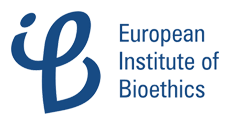
During the last four decades, a period of 14 days was officially accepted as the ethical and legal limit on human embryo research. In other words, scientists were not allowed to pursue research on embryos beyond the fourteenth day after their fertilisation or after their unfreezing if they were previously frozen. This limit was recommended for the first time by the 1984 Report of the UK governmental Committee of Inquiry into Human Fertilisation and Embryology, also named after the Committee chair as the Warnock Report.
The International Society for Stem Cell Research (ISSCR) dropped this limit in their revised Guidelines for Stem Cell Research and Clinical Translation published last May. This American non-profit organization was founded in 2002 with the mission of promoting and guiding the stem cell science and is now a worldwide valued and influential organism.
In the present Guidelines, the organization provides recommendations for a significant number of issues. Regarding the 14-day limit, the ISSCR recognizes that “it is currently not technically feasible to culture human embryos beyond formation of a primitive streak or 14 days post-fertilization; however, culture systems are evolving, making this a possibility in the near future”. The organization also insists on the potential benefits of such research: a better understanding of interventions for infertility, in vitro fertilization, pregnancy miscarriages and embryo developmental disorders, as well as the development of integrated stem cell-based embryo models. Consequently, the ISSCR now suggests that “a specialized scientific and ethical oversight process could weigh whether the scientific objectives necessitate and justify the time in culture beyond 14 days, ensuring that only a minimal number of embryos are used to achieve the research objectives”.
On the one hand, few dispute the fact that this limit recommended by the Warnock Report emerged only as a compromise between different stances. Neither those who consider the human embryo as a human being and worth of equal moral status nor those who conceive the embryo simply as a cluster of cells were satisfied with this solution. The first ones would prefer a total ban on embryonic research, the others would remove all restrictions.
On the other hand, even if it is to some extent arbitrary to establish the limit on day 14, the 1984 Committee did try to provide a scientifically grounded solution. It is on the fourteenth day that the embryo develops the primitive streak, a precursor of the brain and the spinal cord. This streak also marks the beginning of gastrulation, which is the differentiation of the embryonic inner cell mass into three different layers. It is also at this point that the embryo can no longer divide into twins; consequently, many philosophers argue that this is the moment when a person can say that “I began to be me”.
However, a deeper look into the arguments presented by supporters of the ISSCR limit removal reveals a larger departure from science and a more ideological approach. This is what can be observed in a recent article by Robin Lovell-Badge, famous British scientist and chair of the ISSCR Guidelines task force. The two arguments presented by this scientist are not new and have been previously criticized in an insightful paper by bioethicist Giulia Cavaliere.
The first argument presents the form of an argument of technical feasibility: Lovell-Badge explains that the 14-day limit presented no conflict with science in the past because we were not capable of growing embryos for longer than that time. But the limit should be updated and extended to allow progress as it becomes technically feasible. However, Cavaliere points out the fallacy in which one incurs when concluding that certain research should be pursued simply because technology allows us to do so.
Lovell-Badge's second argument could be called the beneficence argument: the scientist argues that the number of days for a certain research, and the number of embryos used, is justified according to the value of the information obtained from such research. As Cavaliere notices, this reasoning corresponds to a utilitarian principle of comparing benefits and costs. However, the bioethicist highlights that such evaluation is misleading in the present case, because benefits and costs are not enjoyed or suffered by the same person. When evaluating the suitability of some medical treatment, for instance, doctors compare benefits and costs for the patient. In this case, however, costs are only suffered by the embryo, who is being destroyed, and potential benefits are only enjoyed by the rest of society.
As a consequence, other scientists and bioethicists are condemning 14-day limit relaxation, as recommended by the ISSCR. This is the case, for instance, of the statement issued on June 3 by the Anscombe Bioethics Centre.
